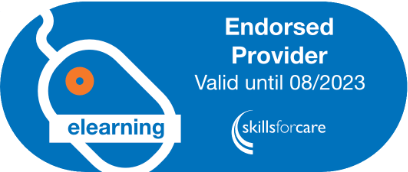01206 805359
Mon - Fri, 9am - 5pm



The purpose of this Level 2 Award in Cardiopulmonary Resuscitation (CPR) and Automated External Defibrillation (AED) is to equip learners with the skills, knowledge, and understanding needed for effective CPR and the safe use and management of an AED. This qualification enables trained providers to offer emergency lifesaving first aid care using an AED, grounded in an understanding of the BLS/AED algorithm and AED use principles and responsibilities.
ProTrainings Basic Life Support courses meet all required learning outcomes and align with the Skills for Health UK Core Skills Training Framework (UK-CSTF), covering both adult and pediatric patient care at Level 2. The course is endorsed by Skills for Care and complies with the Resuscitation Council (UK) guidelines for adult and pediatric CPR basic life support (BLS).
This course covers Basic Life Support skills for adults, children, and infants, including healthcare variations for infant CPR. Topics include safety precautions, initial assessment, recovery position, CPR, compression-only CPR, CPR handover, and choking management. It is ideal for nurses, care workers, and medical professionals needing annual updates for professional membership. While suitable as an online-only course, it can also be offered in a blended format with a practical session through our network of approved instructors.
AED training is a crucial component of this course, given the increasing availability of AED units in communities and workplaces. With minimal training, these devices can significantly improve the survival chances of cardiac arrest victims. If you have completed other first aid courses, you will appreciate the importance of prompt AED use, making this course an excellent next step to enhance your skills.
All our first aid courses comply fully with the UK and European Resuscitation Council Guidelines 2021, meeting HSE requirements. This qualification, along with most other ProTrainings qualifications, is endorsed by TQUK, reflecting our commitment to compliance and quality assurance.
Companies, organisations, and agencies are encouraged to contact us for group discounts, information about onsite training, and details on how our system can be used to track and monitor staff training.
This course can be completed as the online part 1 of a 2-part blended course. After completing this online course, you may find and attend the classroom-only part 2 course and cut down on the number of days spent in the classroom.
This course comes with 4.0 hrs (6.0 class) of CPD, although the time to complete the course online may be less than this. Total course time includes 2 hours and 50 minutes of video training as well as knowledge reviews, final test, remedial help and reviewing downloaded material.
The content of this and all our courses has been independently certified as conforming to universally accepted Continuous Professional Development (CPD) guidelines and come with a Certified CPD Statement as well as a ProTrainings Certificate and for online courses an Evidence Based Learning statement.
Introduction to CPR and AED Level 2 Course
Initial Care and Safety
Heart Attack
Cardiac Arrest and CPR
AED Introduction and Types
Using an AED
AED Maintenance
AED Troubleshooting
Summary and Practical Options
Learning Outcomes
1 Understand basic life support requirements 1.1 Describe the principles that underpin basic life support
1.2 Explain the circumstances under which resuscitation is performed
1.3 Explain why early intervention is necessary
1.4 Describe different types of cardiopulmonary arrest
2 Be able to demonstrate basic life support techniques and automated external defibrillator use in line with current national guidelines2.1 Demonstrate cardiopulmonary resuscitation
2.2 Demonstrate compression-only resuscitation
2.3 Demonstrate the use of resuscitation barrier devices
2.4 Demonstrate how to manage a choking casualty
2.5 Demonstrate the use of an automated external defibrillator
2.6 Describe the differences when using an automated external defibrillator on a child
3 Be able to demonstrate post-resuscitation procedures3.1 Demonstrate how to place a casualty in the recovery position
3.2 Identify the risks when placing a casualty in the recovery position
3.3 Describe handover and reporting procedures
4 Be able to carry out basic user maintenance and troubleshoot problems with an automated external defibrillator4.1 Identify when a defibrillator battery requires changing
4.2 Identify when electrode pads need replacing
4.3 Demonstrate how to troubleshoot problems if the automated external defibrillator does not function correctly
5 Understand the safe use of an automated external defibrillator5.1 Describe the safety considerations when using AEDs
“Very effective and useful course to refresh skills . Updated course too each year, and I noted DNR video this year which is useful!”
“EXCELLENT”